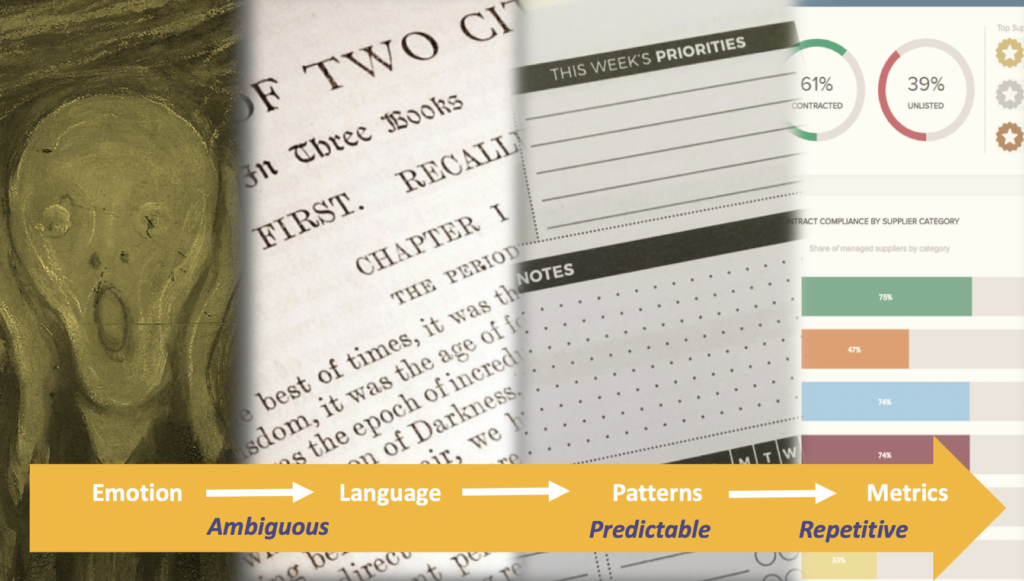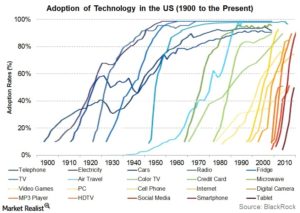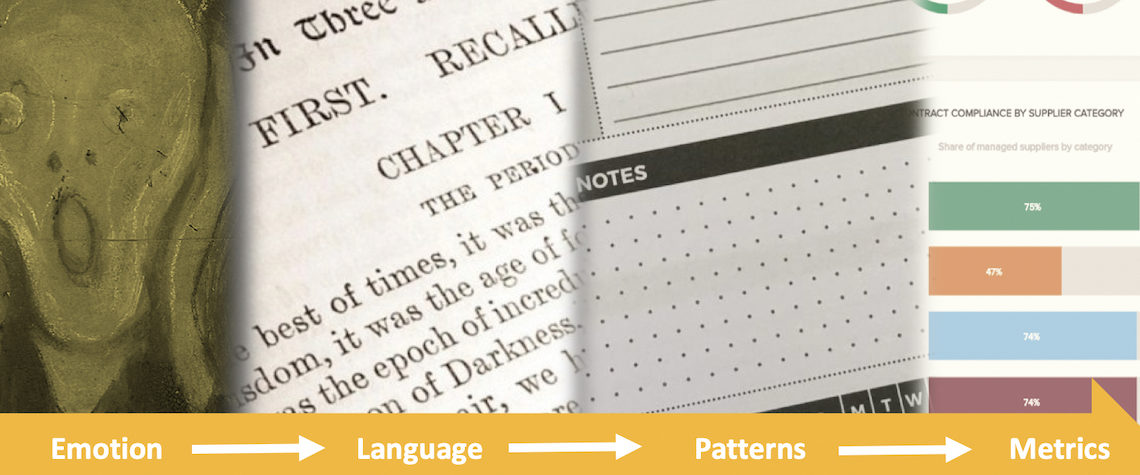Communities play a critical role in innovation. Whether in the middle ages or now cities, in particular, are critical to innovation. Cities are a type of community that produces a high cadence of collisions between a diverse set of individuals. This collision of people and ideas allows people to converge on what is meaningful and interesting and then to find ways to scalably address the opportunities that arise from that meaning. The obvious current example is the innovation generated in Silicon Valley.
However, in the conversation around online communities and innovation, the connection to innovation is not as clearly understood. A lot of the discussion is focused on ideation and input. As someone with a background in innovation and product management, this represents only a tiny portion of innovation – and a tiny portion of the opportunity.
Emergence in the White Space
To better understand the connection, let’s consider how innovation happens. The front end of innovation starts with a feeling; a frustration about what is or excitement about what could be. It’s vague and unformed. These feelings are best expressed through art because they are still unarticulated. To me, this provocation to develop new sensibilities or understanding is the crucial difference between art and graphics or crafts. It’s the emergence of something new in the white space around what currently exists.

An example of this that I love, is how Billy Porter uses clothing to make an artistic statement. To me, this is an expression of frustration at current gender norms and expectations. It challenges us to think more broadly about what it means to be a man, a woman, or neither. It opens up space for something different.
Developing Shared Meaning
Once we have something expressed through art we can show it to others, discuss it, and together find the words to express its meaning. We can translate it into something more defined. We find words. We argue about them. We refine them.
I use art in workshops to help develop a shared perspective on things like culture and leadership, which many people find hard to articulate. Selecting images that represent those things and then having a conversation about if, how and why those images resonate helps people put more specific language to what feels vague and squishy. It also helps uncover divergent perspectives, which can reveal underlying issues or mindsets that are making progress hard.
As more and more people engage in developing shared meaning, it is absorbed into the culture and people’s mental models. It becomes normalized. This process requires dialog, trust, and relationships. The more frequent and deeper the discussions, the faster art transforms into meaning and then into concrete opportunities.
Norming and Optimizing
Addressing concrete opportunities allows something to become normalized, predictable, and even routine. People have a shared understanding and expectations about how we interact with the new concept and the value it has. It becomes a pattern that can be applied again and again – a template.
Once a pattern is established, you can apply technology to the pattern so it can be optimized and repeated with a lot less effort. Critically, this also allows innovation to be measured, further optimizing it.

This is how innovation has always worked but it has been hard to see because translating something from emotion to language to patterns to metrics has often taken decades – especially if the innovation was complex and expensive and the value hard to understand.
As communications, collisions, and engagement have increased in speed thanks to the Internet and the global online community it created, the speed of innovation and adoption has fundamentally changed. Innovation gets initiated, understood, and translated into concrete and meaningful products and services within months.

This increase in adoption has largely been the unintentional benefit of people clustering naturally in online spaces to engage. However, in the past few years organizations are finally starting to see and optimize these networks – these communities – to explicitly pursue learning, change, and innovation. One great example of that is the community ecosystem at ESRI, a geographic data company that works with a huge range of industries and applications, all of whom are developing unique ways to realize value from its data. By intentionally structuring and managing the community, its partners can access, learn, and develop solutions more quickly, accelerating shared value for the entire ecosystem.
Connecting Community Value to Innovation
Communities are, at their core, the way people have always come together to learn. They provide the space, relationships, collisions, and trust necessary to create shared meaning, iterate on emergent ideas, and norm new patterns and behaviors. Offline that complex system is hard to understand but now that many communities are online, we can see, measure, and optimize them.

We can also measure and project the value and speed of innovation, through engagement in communities. In the 2019 State of Community Management research, I found that the growth in engagement and value of communities closely matches the innovation S curve. The implication is that the better an organization can foster, develop and sustain communities, the better they will be at rapidly turning market frustrations and insights into opportunities and then into solutions.


